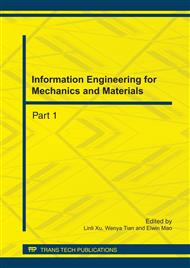p.889
p.894
p.899
p.904
p.909
p.913
p.917
p.922
p.927
Structure Analysis and Optimum Design of NC Grinding Machine Tool Bed
Abstract:
The modern design method based on the finite element theory has become the essential means of present machine design. In this paper, dynamics finite element model of NC grinding machine tool’s bed has been established with the finite element analytic technique. Dynamic characteristic of processing has been studied. The optimization program of structure to lower the vibratory response has been designed. This advances the dynamic stiffness of bed. This research provides an essential theory and technology support for achieving the advanced level of the international similar machine tool on the aspect of machining precision, reliability and security.
Info:
Periodical:
Pages:
909-912
Citation:
Online since:
July 2011
Authors:
Price:
Сopyright:
© 2011 Trans Tech Publications Ltd. All Rights Reserved
Share:
Citation:


